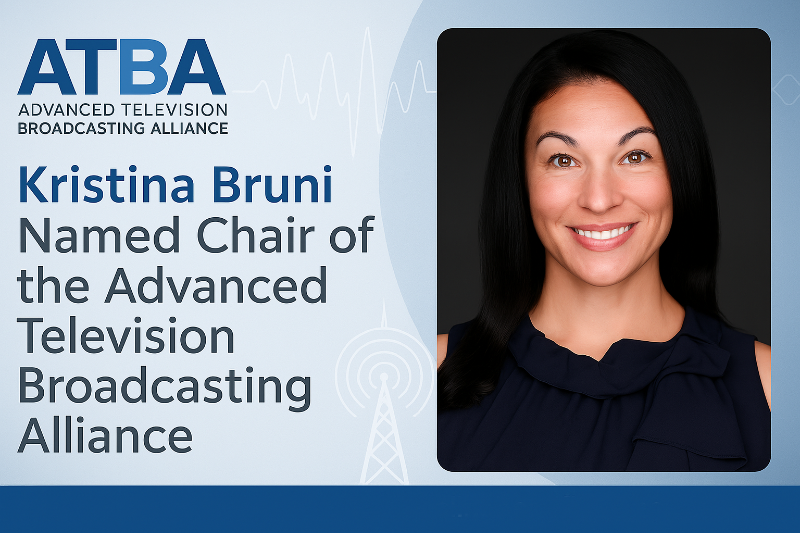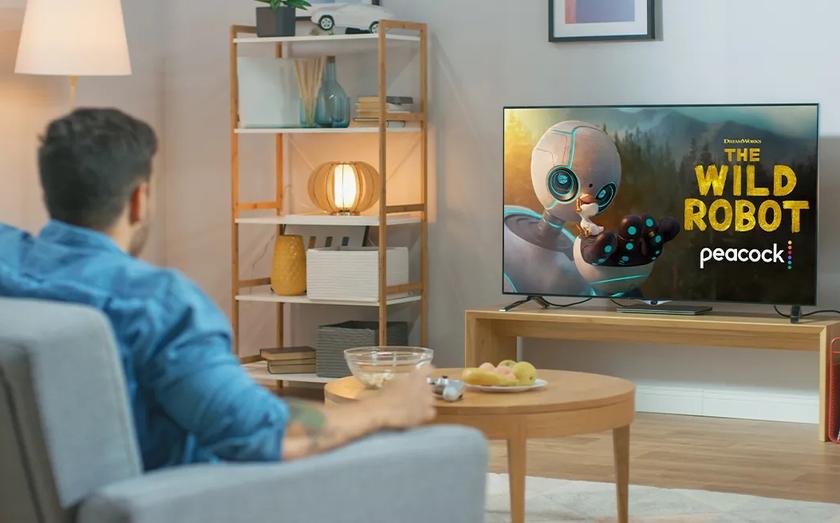Q&A: Matthew Goldman on 4K, UHD, HDR and More

LAS VEGAS—“Next-generation” television is like TV with sprinkles—4K, high dynamic range, wide color gamut, high frame rate. All come with complications and possibly, trade-offs.
Ericsson’s Senior Vice President of Technology for TV & Media Matthew Goldman, video expert Mark Schubin, SMPTE President and CBS Vice President of Engineering and Advanced Technology Robert Seidel, and broadcast veteran Jim DeFilippis and will parse these advanced television features with crowd-sourced questions from their peers during the NAB Show in a Tuesday, April 19 at 2:30 p.m. Super Session entitled, “4K, UHD, HDR and More—The Future of Video.”
Here, we have Matthew Goldman taking on the crowd:
CROWD MEMBER:What provides the best bang for the buck: 2160p resolution, high dynamic, wide color gamut, or high frame rate (120 fps)?
MATTHEW GOLDMAN: I like to call this “the best bang for the bit.” High dynamic range is clearly the best bang for the bit (or buck) for next generation Ultra HD technology.
There are three aspects that impact this: 1) the “wow” factor of HDR is immediately noticeable by consumers, 2) many consumers’ viewing position is too far back from the display to realize the full effect of 4K spatial resolution (best viewing distance is about 1.5 picture heights back from the screen, but most consumers view the display from about 3 picture heights away), and 3) 4K spatial resolution (2160p) requires significantly more bandwidth to deliver to the consumer than HD, while HDR requires a relatively small percentage.
CM:The Canadians are now doing baseball, basketball and hockey in 4K, and distributing it via cable. What is holding up the U.S. broadcasters? What are their immediate challenges?
GOLDMAN:Likely just plain sensibility, for multichannel video programming distributors that use set-top boxes anyway (cable, satellite, telco)… it’s not possible in either country today via terrestrial broadcasting! At this early adopter stage, it comes down to priorities—who wants to lay claim to being first to generate industry buzz versus waiting for all the pieces of the puzzle to come together to offer a full-featured next-gen immersive viewing experience.
CM:What about standards? What’s needed?
GOLDMAN:Ohhh, there is just so much to do still … lots of activities are occurring across multiple standards developing organizations and industry forums. Additional HDR and wide color gamut signaling is needed on both the production side (Society of Motion Picture and Television Engineers, ITU-R) and consumer side (Consumer Technology Association, HDMI Forum) interfaces. Finalization of HDR/WCG program exchange formats (ITU-R). Recommendations for preferred interoperability points (Ultra HD Forum), system definition for delivery to consumers (ATSC, DVB, SCTE, others), streaming media (Streaming Media Alliance, DASH Forum, others). The so-called UHD-1 Phase 1 specifications really only addressed the 4K spatial resolution and in some cases, WCG signaling. Hopefully, much of the so-called UHD-1 Phase 2a specification, which will add HDR for both 2160p and 1080p, will be complete by end 2016 or early 2017. HFR is even further out.
CM:Beyond sports, what other genre will benefit and have a business ROI?
GOLDMAN:Sports and nature documentaries benefit greatly from all the new immersive viewing technologies—4K resolution, HDR, WCG and high frame rates… well, HFR if the content is high motion—not needed for talking heads! The ROI question is an interesting one because 4K resolution and HFR require extensive changes to the end-to-end workflows and a lot more bandwidth. HDR/WCG have a much smaller impact. Limited bandwidth to the consumer is a particular challenge in terms of availability and costs.
CM:Will broadcasters be “forced” into 4K/UHDTV adoption similar to the evolution of HDTV? If so, by when?
GOLDMAN: I don’t think so. It comes down to the economics, even if there will be lots of premium content driving consumer interest. Now, 1080p with HDR/WCG – “Enhanced HD” as some call it—many of us just consider this part of the next generation of UHD—that’s much more interesting as a practical business case in terms of bandwidth and ROI.
As mentioned earlier, the consumer will definitely see the benefit of HDR/WCG over conventional TV and the increase to 1080p HD resolution from conventional 1080i or 720p HD will be noticeable to consumers as well.
To be very clear, this is not about inventing a new TV format! All UHD TVs upconvert 1080p to 2160p to display as 4K, so regardless of the transmission or delivery resolution, the display is 2160p. This presents an interesting business case for broadcasters wanting to provide much of the immersiveness of next-generation UHD, but with limited bandwidth, especially when a majority of viewers are not sitting close enough to the display to see the benefits of 4K resolution (see my earlier comments about this).
Of course, there will always be marketing folks espousing the difference between upconverted 4K and “real” 4K, but again, this comes down to economics. So, if a broadcaster is able to deliver all the next gen UHD technologies—2160p, HDR, WCG, HFR—then absolutely, they should go for it. However, a lot of the benefits of the next-gen UHD can be realized with 1080p HDR/WCG if that is all one can do.
CM:What are the key dominos in the chain that need to be knocked over for the consumers to feel this is real and start spending? Is it availability of “great titles,” consumer devices, branded premium channels, marketing or something else not yet concocted?
GOLDMAN: Lots of compelling content!
CM:The young adults of today are notorious for consuming social content on small, portable devices. They are the future money for this. Why do they need it?
GOLDMAN: The benefit of these new immersive viewing technologies with portable handhelds is complicated by the nature of the use case: What is the viewing environment? If the device is used in a brightly lit area, then much of the gain is lost because the environment will mask it. However, indoor viewing on a tablet or outdoors at night will see the benefit—so is that use case enough to justify?
CM:How do we as an industry start our advancement to UHD and HDR?
GOLDMAN:It’s already in motion! Via standards and interoperability forums.
CM:What is the immediate opportunity for a TV group with regard to these technologies?
GOLDMAN: Use them to evaluate what consumers really want. The practical versus the theoretical lexicon of next-generation TV.
CM:Are we now headed toward 1080p60 with HDR and wide color as a first step, with 4K used in production and on-set display etc.?
GOLDMAN: Ahhh, please see my earlier comments! 1080p HDR/WCG—the best bang for the bit, the best bang for the buck!
CM:What are your thoughts on HDR HD facilities versus native 4K HDR?
GOLDMAN: There are many implementation of 3Gbps facilities today (support 1080p) while very little for 12 Gbps (needed for native 2160p in baseband). For all the points mentioned earlier, is it worth the investment to build a native 2160p infrastructure for the gain in user experience? This is what the broadcaster needs to grapple. This question is very different between a Hollywood studio production and live TV production or distribution.
CM:Is the notion of HDR for HD now officially dead?
GOLDMAN:Huh? It’s barely even born yet! With all of the considerations mentioned above, I believe that broadcasters will be giving 1080p HDR very serious consideration, especially since the UHD TV will upconvert to 2160p.
CM:Will 4K become a standard transmission?
GOLDMAN:“Standard” as in common use? Maybe someday. “Standard” as in standardized format? Already in place.
CM:What are you views on affordability of transmission methods for 4K, that is, broadcast, broadband and/or satellite?
GOLDMAN:Please see my previous comments regarding bandwidth limitations and cost of infrastructure and operation.
CM:Do any of you on the panel think there is benefit to using HDR and/or 4K to author a better HDproduct that can be delivered to consumers without significant changes to current infrastructure, instead of racing to provide 4K?
GOLDMAN: Absolutely!
CM:Shooting UHD side-by-side with HD is too costly. How can we reduce the cost of producing sports in UHD and HDR?
GOLDMAN:Just like with the transition from SD to HD, there is a learning curve. The shooting style of zooms and pans in higher resolution can have negative impact on the viewer, so these need to be considered. If the shooting style can be addressed successfully, then there are known technologies for down-rez of UHD and there are discussions occurring actively within SMPTE and the ITU-R regarding mapping a larger color volume (HDR+WCG) into a smaller one, even in real-time.
CM:Do you think that high frame rate is suitable for all genres?
GOLDMAN: Only of value to high motion content, such as some sports and nature documentaries.
CM:Given the propensity of advertisers for brighter brights and whiter whites, how do we avoid the CALM Act for brightness?
GOLDMAN:Ahhh, I’ve been calling this “video loudness.” The industry definitely will need to address how to handle transitions in programs, across interstitials, etc. This work effort is just in its infancy but I believe really will be needed.
CM:How do we integrate interstitials into programming without brightness and color wars?
GOLDMAN:We need to develop “video loudness” standards!
CM:How well can we produce for both HD and HDR without serious compromises, particularly in graphics or saturated colors?
GOLDMAN:We need to develop “video loudness” standards!
CM:Given the constraints of the television, cable and satellite system, how comparable will the broadcast experience be to the ultra Blu-ray?
GOLDMAN: It can be very comparable, especially driven by compelling premium sport content. See my previous comments regarding proper viewing distance and 1080p HDR WCG.
Also see…
April 13, 2016
“Q&A: Jim DeFilippis on 4K, UHD, HDR and More”
We have many standards, but what we are missing is clarity of the problem they are supposed to solve.
April 11, 2016
“Q&A: Mark Schubin on 4K, UHD, HDR and More”
“In my opinion, HDR and HFR offer the most bang for the buck. HDR might be easier to implement, but it can increase motion artifacts, bringing us back to HFR.”
Get the TV Tech Newsletter
The professional video industry's #1 source for news, trends and product and tech information. Sign up below.












